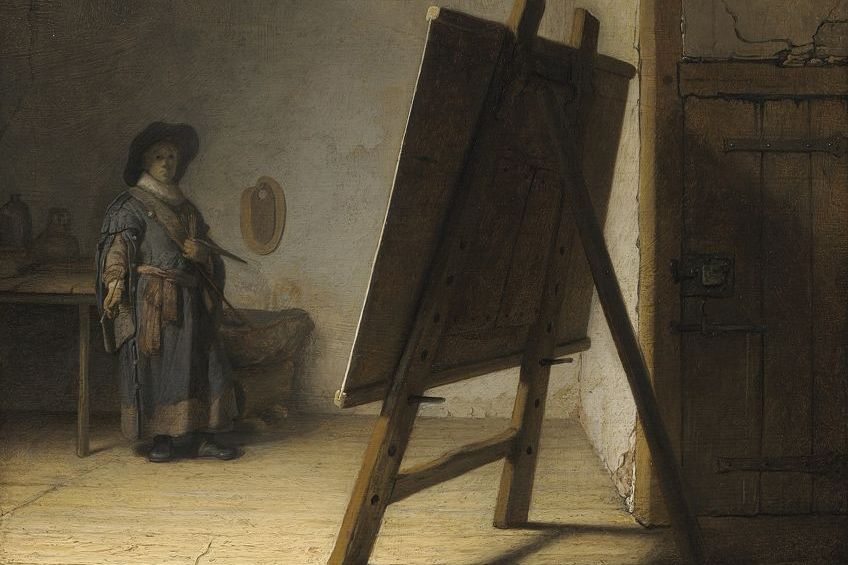Naturalistic Art – Exploring Art That Reflects the Natural World
We know it’s here to stay, but there is no way to know exactly when artists began attempting to make naturalistic art. In fact, there are numerous compelling interpretations of what this term even entails. Its multiplicity speaks to a world in constant flux, and an eternal artistic instinct to earnestly represent this ever-changing condition.
Contents
An Observation of Naturalistic Art
As a historical movement, Naturalism in literature and art began in the early Renaissance of the 19th century. It is often perceived as having been short-lived. However, as naturalistic art was in part inspired by the principles and methods of natural science, it continues to evolve. Naturalism in art extends beyond the Renaissance period and the depths of its contributions to the history of art are unfathomable.
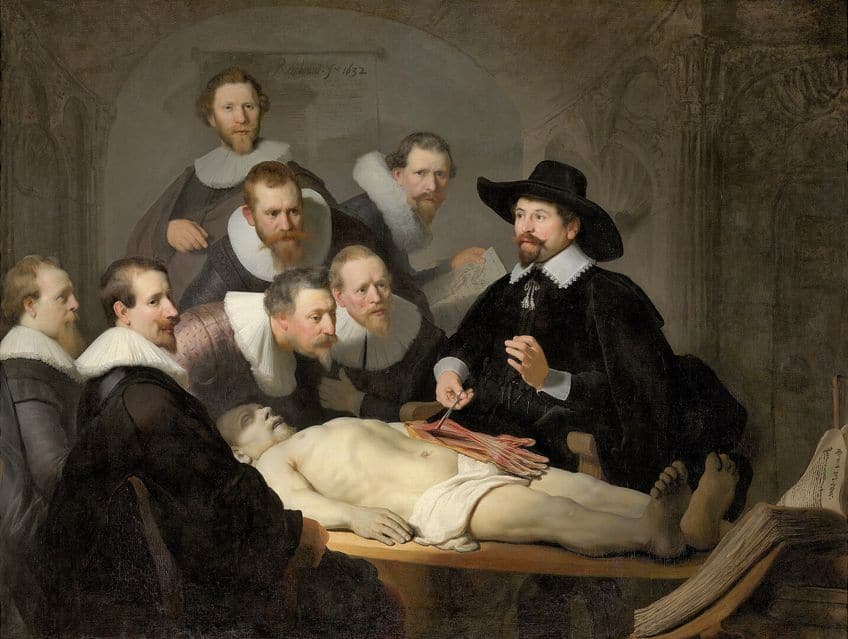
What Is the Naturalistic Art Definition?
To understand what the naturalistic art definition is, it might be useful to begin by looking at the word “naturalistic”. Aesthetically, a naturalistic object is derived from or closely resembles nature. For example, you could have a naturalistic water fountain. We could also define something naturalistic as being based on the theory of naturalism in literature or art. In this case, we could have naturalistic paintings of a river for example. Therefore in art, the word ‘naturalism’ is used to describe artworks that closely resemble the material world.
An artist attempting to make naturalistic art would use the physical characteristics of artwork like shapes, colors, forms, lighting, and shadows, to aid in the depiction of realistic objects in a natural setting.
A naturalistic artist might render people, places, and things as they might appear in nature. Artists use accuracy, detail, and skillful observation in the construction of naturalistic art which portrays as they might have appeared in real life. The trends in naturalistic art are usually influenced by the aesthetics and culture of a particular time period. Artistic subjectivity and subject matter also play a role in the depiction of the natural world. However, when it comes to naturalistic art, meaning often resides in naturalism itself. That is observation and means of production are integral to the reading and appreciation of naturalistic art. Landscape, figurative, and still life are the main types of naturalistic art.
Still Life Naturalism
16th-century female artist Rachel Ruysch started making art by working alongside her father who taught botany at the University of Leiden. She illustrated his books, detailing the concepts and mechanics of the plants he studied. Eventually, Ruysch became known for her artistic still-life paintings such as Flowers and Plums (ca.1705) or Bouquet(1703). These images display remarkable scientific accuracy in each plant and flower as well as a masterful artistic arrangement.
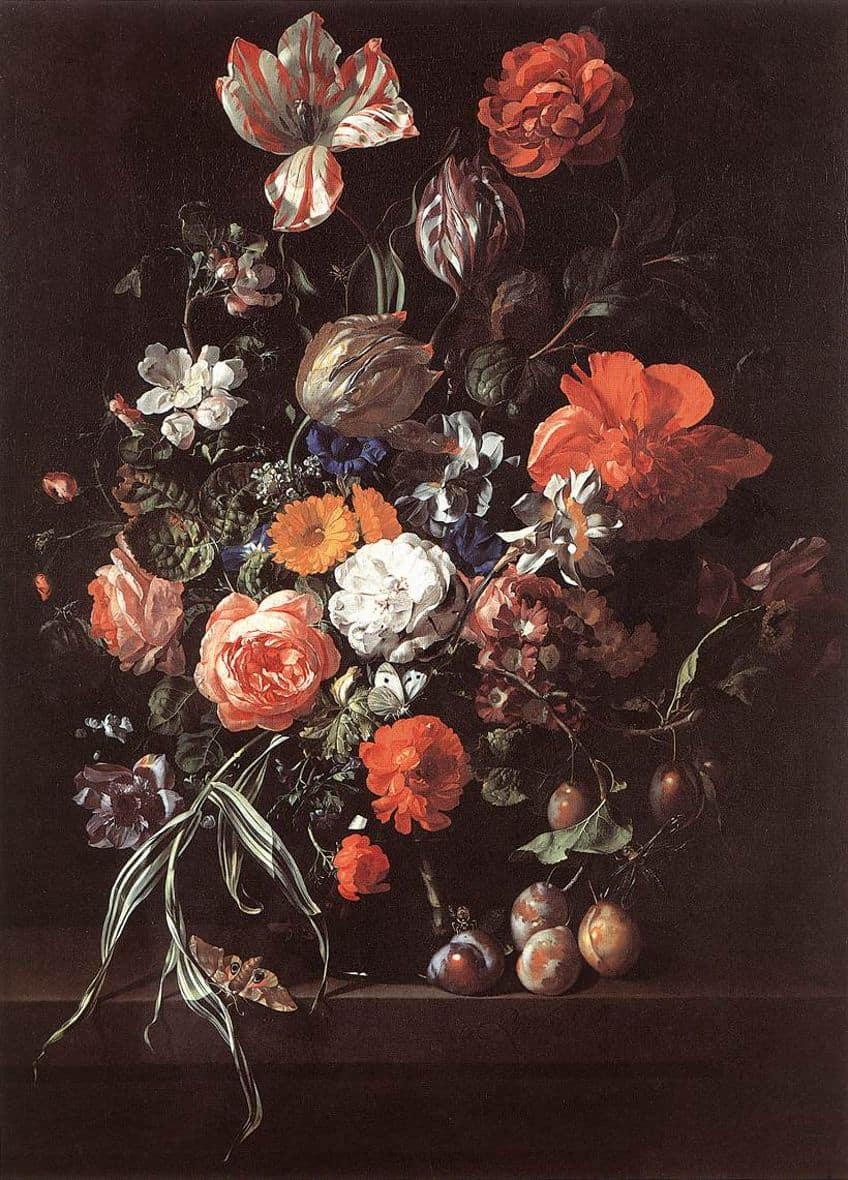
Figurative Naturalism
While it is often attributed to Idealism, figurative art is a large part of naturalistic art as its practitioners usually aim for a true-to-life drawing or painting of their subject. Life drawing is not just about the construction of an image, but about careful observation and study. A timeless example of figurative naturalism art is the famous Mona Lisa (1503) painted by the even more famous quintessential naturalist Leonardo Da Vinci. Ever intrigued by his environment, Da Vinci studied the human body and nature by learning about the arts and sciences.
Through careful observation and study, he mastered the sfumato technique and produced startlingly lifelike figures in his artworks.
Landscape Naturalism
The etymology of naturalism is obviously rooted in the term “nature”. It’s no surprise then that the most natural genre of naturalism is landscape painting. Many art historians attribute naturalism’s first emergence to English landscape painting, before its expansion to France and other parts of Europe. As such, a great example of landscape naturalism art would have to be The Hay Wain (1829) originally titled Landscape: Noon by John Constable whose landscape paintings are considered prime examples of the naturalist movement. The original title suggests that Constable had envisaged it as following the classical landscape tradition of depicting the various cycles of nature.
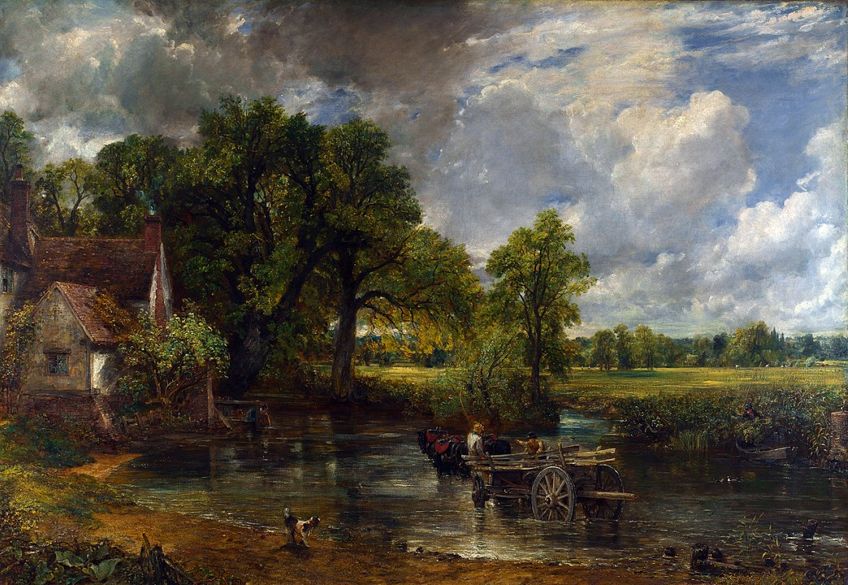
Somewhere Between Realism and Idealism
Realism, Idealism, and Naturalism are related, therefore it is important to note the distinctions between them. Realism and Idealism may be representational but not necessarily naturalistic. Take Picasso’s The Old Guitarist (1903) as an example.
The painting represents a recognizable human figure, so it is representational, but it is not naturalistic because the subject is not depicted naturally and has been stylized for effect.
Idealism
Unlike Idealism, Naturalism in art attempts to depict nature as it truly is and not how we wish or imagine it would be. In the 5th century, influenced by rational philosophy, ancient Greek artists figured out how to observe the body to produce naturalistic depictions of the human body. However, these artists developed what we call the Greek canon, which is founded on a system of proportions and conventions for producing art, particularly, images of the human figure. The ancient Greeks didn’t depict ordinary people, but youthful athletic figures with symmetrical features and aspirational proportions. These images reflected ancient Greek ideas about what made a person ideal. This is why such images are considered idealism, rather than naturalism.

Realism
Naturalism was borne from realism. Realism refers to realistic portrayals of subject matter that are more focused on humans, and their experiences in social settings. Realism is concerned with the narrative while the naturalism definition is concerned with the aesthetic. Stone Breakers (1849) by Gustav Courbet is an excellent example of a realist painting. The artwork, which is essentially a narrative of poverty, depicts two members of the lower class, working as stone breakers. This piece was a reaction to the poor working conditions of many areas of industrial Europe and the resulting series of labor strikes starting in 1848.
Although it has naturalistic features, its social and political aims make this a realist work. It does more than attempt a naturalistic physicality.
On the Origins of Naturalistic Art
Modern naturalism can be traced back to the 1880s up until the 1940s. It was a response to the idealism of Neoclassicism and the theatricality of Romanticism which manifested as two true-to-life styles: Naturalism and Realism. In the context of social changes such as the French revolution, the industrial revolution, and the advent of photography, intellectuals, and artists began to focus on their lived realities rather than classical or mythical ideals. Realism and Naturalism appealed to the intellect and attempted to portray things as they truly were.

Although the Naturalism definition purports to involve nothing other than the attempt to depict nature as it is, it was influenced by the creative and literary fashion for authenticity at the time. It was driven by the principles of natural science, particularly by Darwin and his ground-breaking theories of nature and evolution. Naturalism used the scientific principles of objectivity and detachment to observe everything, including human beings as objects for study, avoiding the subject of social conditions. In fact, Naturalism can be said to predate the 1880s. It was most pronounced in northern European art after the reformation. It has German, Flemish, and even French iterations, but the bulk of it appears in the 17th century during what we call the Dutch Golden Age. Many of the images made during this period are defined by a naturalistic aesthetic.
Even though there is a degree of historical difference, the depictions are legible and look like a version of reality.
Rembrandt
Rembrandt’s Artist in his Studio (ca. 1629) is a great example of a naturalistic painting of this period. The mostly yellowy-brown monochrome painting depicts the artist himself in the act of painting. Though there is a distance between him and the large canvas in front of him, we cannot see what he is painting. What Rembrandt reveals to us here is an artist in contemplation. Conceptualizing the act of painting.

Rembrandt’s The Anatomy Lesson of Dr. Tulp (1632) goes further. It is a group portrait depicting an anatomy lesson, a delectable example of the emergence and impact of modern science in the 17th century. Through experimental science, these subjects were trying to figure out how the muscles of the arm work. In order to do this, they dissected a cadaver, and observed and tested their theories. The key here is observation. These practitioners didn’t just hypothesize like their medieval counterparts. In Rembrandt’s Anatomy Lesson Tulp is seen, demonstrating by pulling back the muscles and tendons and observing the movements of the arm.
Everyone in the painting including the subjects in the background and Rembrandt himself is engaged in the process of observation.
The Mid-Century Revival of Naturalism
The idea that Modernism was at odds with naturalistic art is simply untrue. Many modernist artists, including Courbet, Manet, and van Gogh, were heavily influenced by 17th-century Dutch artists. Nonetheless, its critics claimed that it was no longer enough to just depict nature as it is. Artists had to delve deeper and be more concerned with the psychology or concept of what was being depicted.

But even after modernism had had its day, naturalistic art remained. The 1960s and 70s signaled a return to naturalism with a wave of new artists making naturalistic paintings, particularly of the human figure. While the Hyperrealism movement occurred concurrently, these were not hyperrealism paintings. In the midst of other movements such as Pop Art, Concept Art, and Abstraction, artists like Alex Katz, Alice Neel, David Hockney, and Philip Pearlstein started painting in a naturalistic style. This revival of naturalism was characterized by a certain detachment from its subjects.
Many of Philip Pearlstein’s nudes for example such as Nude Torso (1963) or Nude (1968) are depicted as headless, signaling that these artists were not invested in their subjects, but rather in the naturalistic texture of the surface.
Lucien Freud
The return to naturalism also signified a return to the painter’s mark and nowhere is that more palpable than in the work of Lucien Freud who is likely the most well-known naturalist artist of the past 50 years. Benefits Supervisor Sleeping (1995) which is one of Freud’s most iconic paintings, is a reclining portrait. Unlike the ideal female nudes often seen in the great reclining portraits of art history, the subject of this painting is an obese social worker named Sue Tilly who worked at a job center at the time.
Her obesity and the knobbly quality of her flesh are why Freud chose her as his subject. He used his heavy impasto painterly style to create heavy textures, exaggerating the surface with flesh-like undertones. Many of Freud’s figures are unattractive and their portraits unflattering, but the artist’s treatment of paint and the surface is beautifully, naturalistically rendered.
From Passe to En Vogue
In an ever-changing world, naturalistic art can sometimes be seen as passe, overshadowed by technological and scientific advancements. Many art schools had abandoned the basic observational skills that were standard in early art education. But observation and thought are never long out of fashion, making naturalistic art the perfect marriage of art and science.
As the world moves from one art movement to the next, naturalistic art remains a constant means of engaging the world.
Whether it is work from the 17th century Dutch Golden Age or Cindy Sherman’s 1970s work, naturalism has proven itself as a useful tool for observing and portraying the contemporary world. In recent years these observational skills have been further revived as painters such as Jenny Saville and Kehinde Wiley continue to use a naturalistic style. Naturalist art is the scientific art of illusion and its practitioners task themselves with constructing images that naturally look as though they might have occurred. Through careful observation and artful manipulation, these artists create objects which are simultaneously natural and unreal.
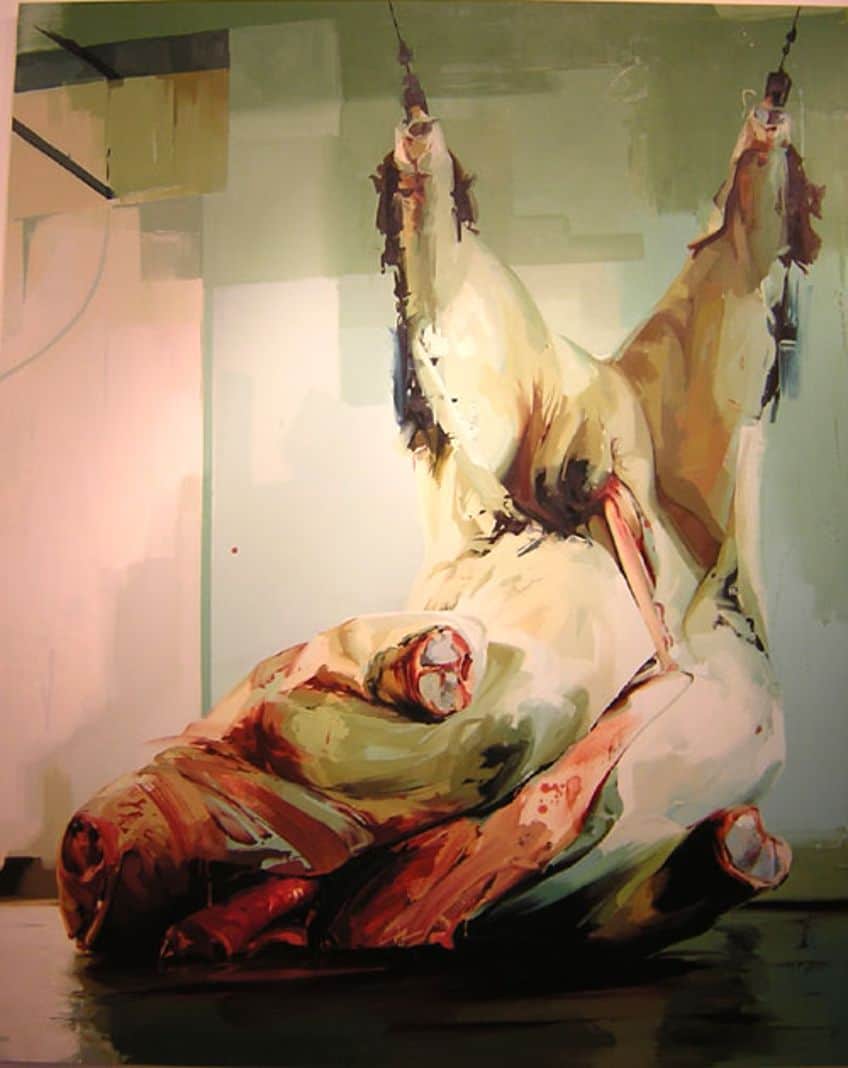
Art schools have once again learned the value of observation, and life drawing classes have once again become a standard mode of teaching. The depths of what artists can learn from observing their natural surroundings have been rediscovered. Because naturalistic art is called from our environment, it is itself a teacher and the primal bearer of meaning.
Frequently Asked Questions
Who Came Up With the Term Naturalism?
French writer and critic Emile Zola (1840 – 1902) is usually called the Father of Naturalism, and is credited with having first coined the term Naturalism.
Can a Work of Art Be Considered Both a Realism and Naturalism Piece at the Same Time?
Indeed it can. Gustav Courbet’s aforementioned painting, Stone Breakers, is representative of Realism as it depicts working-class stone breakers. However, the painting’s composition and subjects are painted in a naturalistic manner.
Is Naturalistic Art the Most Expensive?
Yes and no. In 2008, Lucien Freud’s Benefits Supervisor Sleeping (1995) was sold for $33 million to a Russian oligarch, making it the most expensive painting by a living artist, but this record was soon surpassed.
Liam Davis is an experienced art historian with demonstrated experience in the industry. After graduating from the Academy of Art History with a bachelor’s degree, Liam worked for many years as a copywriter for various art magazines and online art galleries. He also worked as an art curator for an art gallery in Illinois before working now as editor-in-chief for artfilemagazine.com. Liam’s passion is, aside from sculptures from the Roman and Greek periods, cave paintings, and neolithic art.
Learn more about Liam Davis and about us.
Cite this Article
Liam, Davis, “Naturalistic Art – Exploring Art That Reflects the Natural World.” artfilemagazine – Your Online Art Source. September 27, 2023. URL: https://artfilemagazine.com/naturalistic-art/
Davis, L. (2023, 27 September). Naturalistic Art – Exploring Art That Reflects the Natural World. artfilemagazine – Your Online Art Source. https://artfilemagazine.com/naturalistic-art/
Davis, Liam. “Naturalistic Art – Exploring Art That Reflects the Natural World.” artfilemagazine – Your Online Art Source, September 27, 2023. https://artfilemagazine.com/naturalistic-art/.


